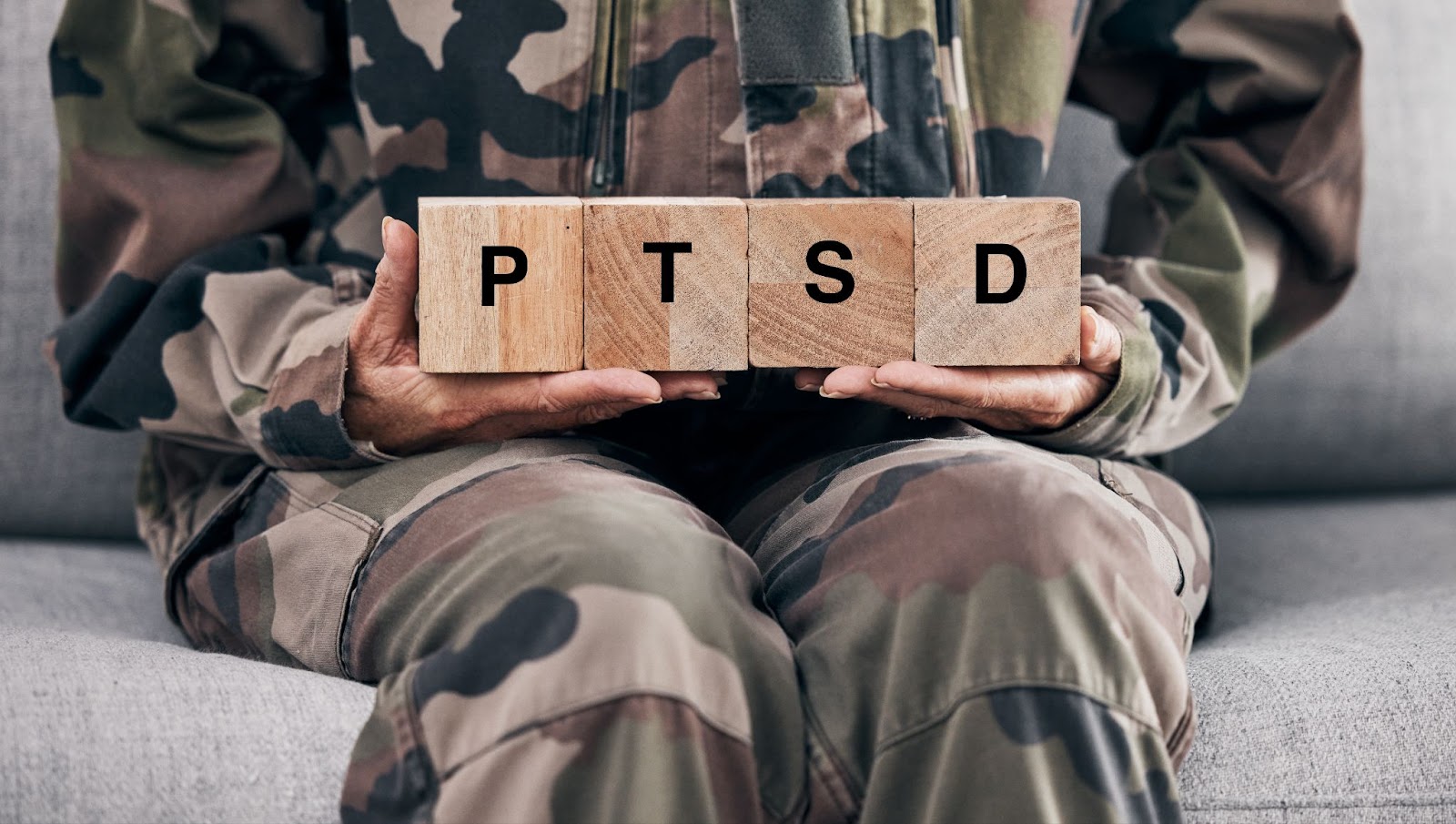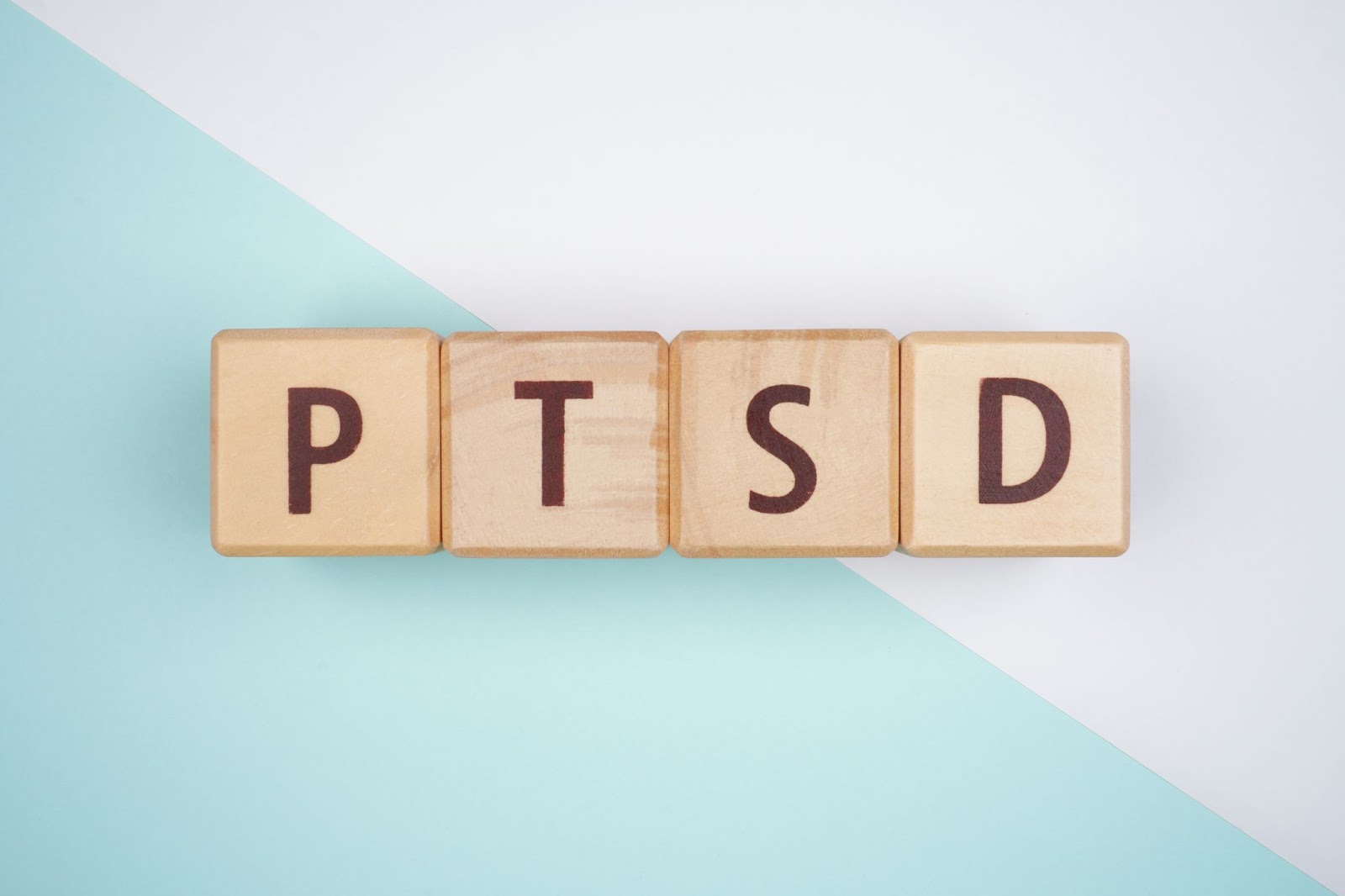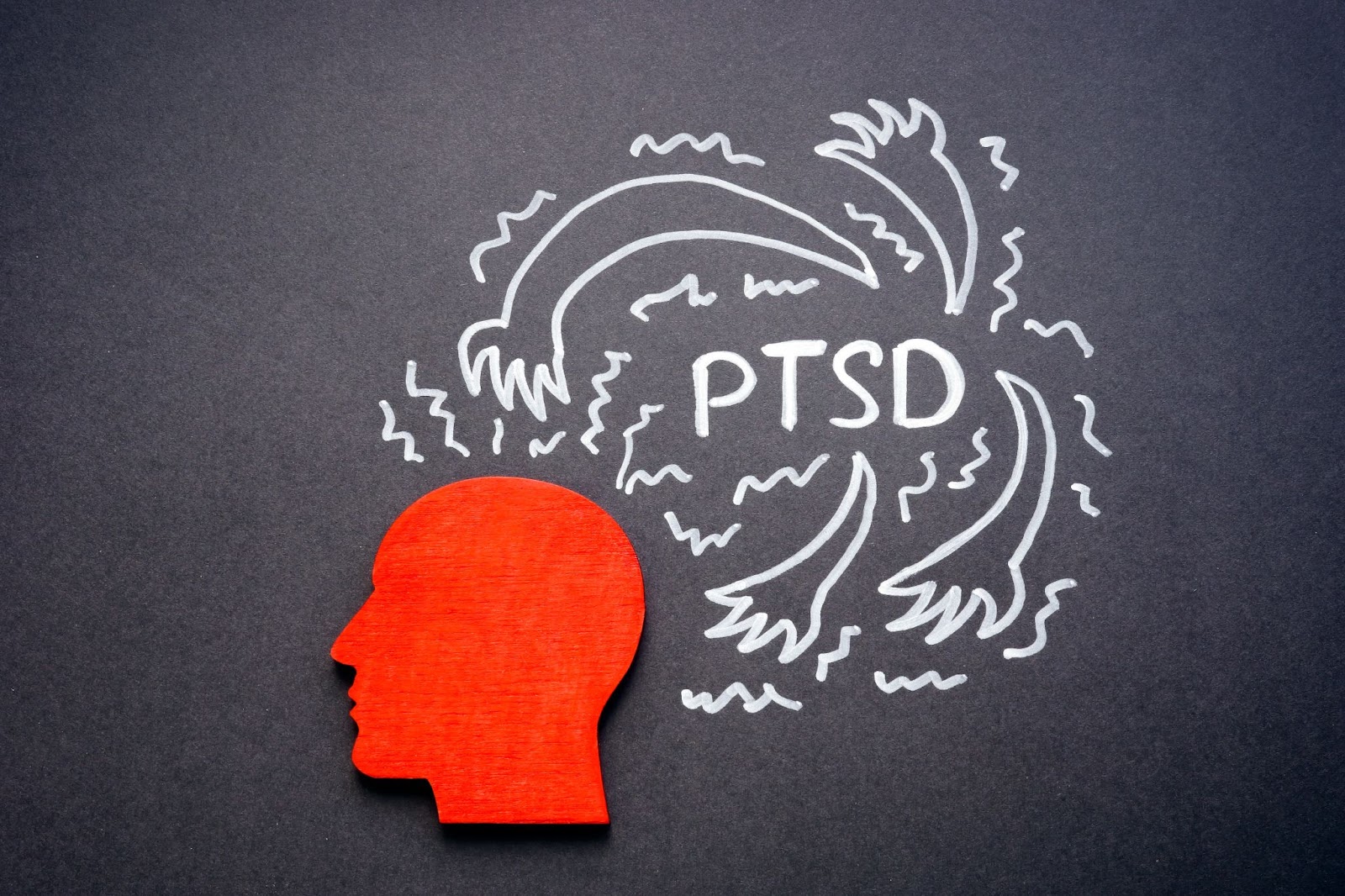Post-traumatic stress disorder really takes a toll, but there’s something promising on the horizon — TMS therapy. It uses magnetic fields to target key brain areas, offering relief where pills and talk therapy might not reach.
In this blog, we’re going to dive into how TMS can really make a difference for those battling PTSD. We’ll cover everything from easing the constant alertness and unwanted memories to helping manage emotions and improving sleep.
Stick with us as we explore how this exciting therapy is opening up new paths for healing and what it could mean for managing PTSD symptoms more effectively.
What is PTSD?
Imagine experiencing a traumatic event — something that shakes the very foundation of your sense of safety and well-being. This can be anything from combat situations, sexual assault, natural disasters, serious accidents, or the loss of a loved one. For some people, experiencing such traumas can lead to a mental health condition known as Post-traumatic Stress Disorder.
You see, PTSD isn’t merely about having bad memories; it’s a complex disorder that has the potential to significantly impact various aspects of life. It can disrupt your daily routine, affect your relationships, and alter how you view the world around you. Now, let’s break it down into some key points.
Symptoms of PTSD
Post-traumatic stress disorder is characterized by four major types of symptoms: intrusive memories, avoidance, negative changes in thinking and mood, and changes in physical and emotional reactions.
Intrusive memories
These include flashbacks, nightmares, and severe anxiety regarding reminders of the traumatic event. It’s as if the trauma replays on a loop, making it feel like you’re reliving the experience over and over again.
Avoidance
Many individuals with PTSD work hard to avoid anything that reminds them of the trauma. This might lead to withdrawing from activities, people, or places that once brought joy. It’s a natural response to protect oneself from emotional pain, but it leads to isolation.
Negative changes in thinking and mood
This is where the emotional fallout can be particularly devastating. People with PTSD might struggle with negative thoughts about themselves or others, persistent feelings of guilt or shame, and a diminished interest in activities that once brought happiness. This emotional numbness may leave one feeling disconnected from reality.
Changes in physical and emotional reactions
This might manifest as being easily startled, feeling tense or “on edge,” or having difficulty sleeping. It’s the body’s way of being perpetually ready to react to stress, which can be exhausting and lead to many physical issues over time.
How common is PTSD?
You might be surprised to learn that PTSD is more common than you think—affecting around seven to eight percent of the population at some point in their lives. It doesn’t discriminate; anyone can develop it, regardless of age, background, or gender.

How TMS therapy works
At its core, TMS therapy is a non-invasive procedure that uses magnetic fields to stimulate nerve cells in the brain.
Specifically, it targets areas involved in mood regulation and emotional responses — the same areas that can be dysfunctional in individuals with PTSD. It was initially developed to treat depression, but its effects have shown promise for a variety of mental health conditions, including PTSD.
The mechanism behind TMS
Imagine if you could reset your brainwaves, much like rebooting a computer. TMS does something akin to that. During a TMS session, an electromagnet device is placed on your scalp, delivering pulses of magnetic energy to the targeted areas. Here’s how the process unfolds:
Magnetic pulses
The TMS machine emits quick, gentle magnetic pulses that penetrate the skull and stimulate neurons in the brain. While this sounds sci-fi, the magnetic fields are similar to those produced by an everyday MRI machine, which is safe and commonly used for medical imaging.
Targeting the right spot
The prefrontal cortex is the specific area of the brain often targeted during TMS for PTSD. This part of your brain plays a significant role in executive functions and emotional regulation.
Neurotransmitter activation
When those magnetic pulses stimulate the neurons, they increase neurotransmitters like serotonin and norepinephrine. These chemicals are essential for mood regulation and often become imbalanced in individuals with PTSD.
Neuroplasticity
One of the coolest aspects of TMS is that it encourages neuroplasticity — the brain’s ability to reorganize itself by forming new neural connections. For someone with PTSD, this means that the therapy helps forge healthier thought patterns and emotional responses, allowing for more adaptive coping mechanisms.
Sessions and duration
TApatient undergoes TMS therapy several times weekly for about four to six weeks. The process is generally painless. Most people describe it as a tapping or tapping sensation on the head.
A holistic approach
While TMS is incredibly effective on its own, it often works best as part of a comprehensive treatment regimen. Many practitioners recommend pairing TMS with other therapies, such as cognitive-behavioral therapy (CBT) or medication.
This combo often enhances effectiveness, tackling PTSD from multiple angles and leading to more significant and sustained improvements.
Who can benefit from TMS?
TMS therapy is particularly suited for individuals who haven’t responded well to traditional treatments, such as medications or talk therapy. If someone is struggling with PTSD and feels like they’ve hit a wall in their healing journey, TMS might be the option they need to get them moving forward.

How TMS reduces PTSD symptoms
Helps you sleep
When we sleep, our bodies and minds do critical work: consolidating memories, regulating mood, and restoring cognitive functions.
For those with PTSD, the hyperarousal and vigilance that come with the disorder can interfere with these restorative processes. This is why many individuals find themselves tossing and turning at night, replaying traumatic events, or feeling an overwhelming sense of dread, preventing them from fading into a restful slumber.
Poor sleep creates a vicious cycle. The lack of quality sleep exacerbates PTSD symptoms, and those amplified symptoms, in turn, further disrupt sleep. It’s a frustrating loop that many find difficult to break without intervention. So, how does TMS come into play here?
Reduces hyperarousal symptoms
Many individuals with PTSD experience hyperarousal, characterized by an exaggerated startle response, irritability, and difficulty sleeping.
TMS has a unique ability to modulate activity in the areas of the brain involved in fear response. This often helps reduce symptoms of hyperarousal, allowing you to feel a bit more at ease. Imagine going through your day without that constant feeling of being on edge.
Alleviates intrusive thoughts
One of the more debilitating aspects of PTSD is having intrusive memories that won’t go away. TMS therapy helps disrupt the neural pathways associated with these intrusive thoughts. By quieting the overactive areas of the brain that trigger these memories, TMS provides relief, leading to fewer flashbacks and an overall improvement in mood.
Works on brain chemistry
Trauma can alter the structure and function of the brain, affecting everything from neurotransmitter levels to overall brain activity patterns. TMS therapy has been shown to increase levels of dopamine and serotonin — neurotransmitters associated with mood regulation.
By balancing these chemicals, TMS helps lift the fog of depression and anxiety that often accompanies PTSD, giving you a clearer path to healing.
Enhances emotional regulation
People with PTSD often struggle to manage their emotions. TMS improves the connectivity between regions of the brain responsible for emotional regulation, such as the prefrontal cortex and the amygdala. This means you’ll learn to face triggers more effectively, respond rather than react, and start to regain control over how you feel.
Non-invasive and side effect friendly
One of the most appealing aspects of TMS therapy is its non-invasive nature. You lie back comfortably while treatments are administered, and there’s no need for anesthesia.
Most patients tolerate the procedure well, with side effects mainly limited to mild discomfort at the site of stimulation or slight headaches, which usually resolve quickly. This makes it a viable option for people who may have experienced undesirable side effects from traditional medications.
Integrates well with other treatments
If you’re currently in therapy or taking medication, TMS can supplement those treatments without interfering with them.
Many practitioners use a holistic approach to PTSD management, integrating TMS therapy with cognitive-behavioral therapy (CBT) or EMDR (Eye Movement Desensitization and Reprocessing). This multidimensional approach can amplify the benefits, providing a comprehensive path toward recovery.
Long-term benefits
One of the most exciting aspects of TMS therapy is its potential for long-lasting effects. Studies indicate that its benefits can persist long after the treatment has ended.
With regular sessions (usually five times a week for about six weeks), many patients notice significant improvements that continue to evolve. It’s like laying down new tracks in the brain, leading to healthier emotional patterns over time.
TMS as a catalyst for therapy
Let’s picture this scenario. You or someone you care about has gone through a life-altering traumatic experience. Maybe it was a car accident, military combat, or even a distressing event in their personal life.
The aftermath can be overwhelming, leaving individuals battling anxiety, flashbacks, nightmares, and a constant sense of emotional numbness.
Now that we understand the basics of TMS, let’s look at how it helps other therapies for people with PTSD. TMS isn’t a one-stop solution, but it works well alongside treatments like CBT or EMDR.
Enhancing CBT
CBT is a popular talk therapy that helps patients identify and change destructive thought patterns. However, for individuals with PTSD, deeply ingrained negative beliefs may be hard to shake off purely through talk therapy.
TMS may help alleviate some of the intense emotional distress or cognitive fog brought on by PTSD, allowing patients to engage more openly and effectively in CBT sessions. By enhancing mood and cognitive function, TMS can help individuals become more receptive to working through their trauma and creating more adaptive thought patterns.
Facilitating EMDR processes
For those who might not be familiar, EMDR is a therapy that helps individuals process traumatic memories through guided eye movements. This technique is emotionally taxing, especially for those with severe PTSD symptoms.
By reducing overall anxiety and improving mood beforehand, TMS prepares individuals to revisit painful memories more comfortably during EMDR sessions. It’s like warming up your muscles before a workout—the more prepared you are, the better your performance will be.
Cross-pollination of therapies
Another aspect to consider is the integrative nature of mental health treatment. TMS supports various therapeutic modalities, making it an excellent adjunct to holistic approaches like mindfulness, yoga, or art therapy.
Imagine a patient attending a yoga class to enhance relaxation but finding it hard to focus due to intrusive thoughts. TMS helps manage those symptoms, making it easier to engage fully in practices that facilitate healing and self-expression.
Increasing the effectiveness of medication
For some individuals with PTSD, medication can be a critical component of treatment. Unfortunately, not all medications are effective, and the side effects are sometimes as taxing as the symptoms themselves.
TMS can actually work alongside medications to enhance their effectiveness. This doesn’t mean that TMS is a replacement for medication; rather, it is a partner that helps patients find a more balanced approach.
Fostering a safe space for healing
Lastly, it’s crucial to highlight the emotional aspect of healing. For many with PTSD, simply stepping into a therapy setting may unleash a wave of anxiety. The idea of digging deep into traumatic experiences can feel daunting, creating a sense of resistance.
TMS therapy offers a gentle introduction to the treatment journey. Because it focuses on regulating brain function and mood without requiring immediate emotional confrontation, people often find it creates a sense of safety. Patients can know they are receiving support on a neurological level, making it easier to embrace deeper therapies afterward.
Navigating insurance and healthcare systems
Navigating insurance and healthcare systems to cover PTSD treatment like TMS can feel like a bit of a maze, but getting a handle on it makes a huge difference. Here’s a straightforward breakdown to help you manage this process more smoothly:
Understanding insurance coverage
Start by digging into your health insurance policy details. Review what your plan says about mental health services. TMS isn’t always standard, so it’s important to know your coverage specifics.
Often, insurers require a pre-authorization for TMS. This means your doctor needs to make a case for why this treatment is essential for your PTSD.
If your insurance says no the first time, don’t give up. An appeal, armed with solid medical backing and maybe evidence of TMS’s effectiveness, sometimes turns that no into a yes.
Communicating with healthcare providers
Keeping open lines of communication can really streamline the process. Make sure your doctor provides all the necessary documentation that clearly outlines your need for TMS. Keep in touch with your healthcare provider’s office to make sure all the paperwork and insurance claims are moving along.
Advocacy and support
Getting some backup can make all the difference. Groups like the National Alliance on Mental Illness (NAMI) can be invaluable in helping you navigate the insurance landscape. Connecting with others who’ve been through the same process will provide practical tips and moral support.
Remember, securing the right coverage for TMS therapy might take some legwork and persistence, but it’s about investing in your health and well-being. Don’t hesitate to reach out for help along the way — you’re not in this alone, and there are plenty of resources out there to support you.

Try TMS therapy at Brain Health Center
If you or someone you know is struggling with PTSD and looking for a treatment option that goes beyond traditional methods, consider TMS therapy at Brain Health Center in St. George, Utah. Our facility has state-of-the-art technology and experts committed to providing compassionate care.
TMS therapy has shown remarkable results in alleviating symptoms of PTSD by targeting the neurological roots of the condition, offering a non-invasive alternative to medication.
At Brain Health Center, we understand that each person’s journey with PTSD is unique, and our approach is tailored to meet individual needs with precision and care. We are here to guide you through the process, from initial consultation to tailored treatment plans, ensuring you receive the support necessary for a successful recovery.
Don’t let PTSD control your life any longer. Reach out to Brain Health Center today to schedule your consultation and discover how TMS therapy can make a significant difference.
Take the first step toward reclaiming your peace of mind and well-being by giving us a call or visiting our website. Our friendly staff is ready to answer your questions and help you embark on a path to recovery. Let us help you achieve the quality of life you deserve.
Contact Brain Health Center today to get started.


